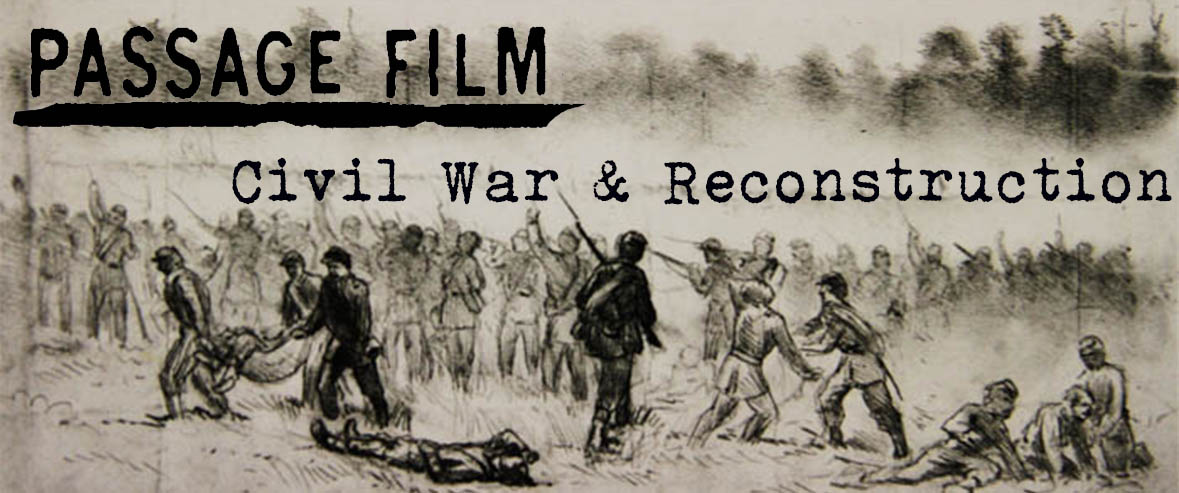


The United States Colored Troops was the official name for the African American soldiers in the Union Army. There were over 200.000 black soldiers and sailors in the U.S. Army and Navy. By war's end ten percent of the Army was black.
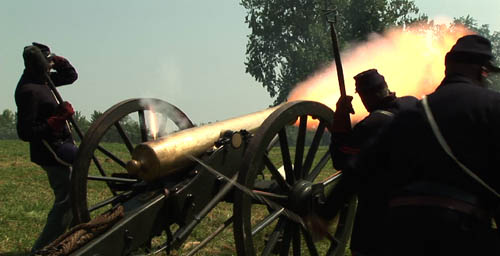
They fought with enormous bravery and were crucial in preserving the Nation. They fought against Confederate soldiers, but also against prejudice they met on the Union side. And slowly they gained respect. They later formed the leadership of the new black communities.
Passage Film, Inc. has made a short film called Rather Die Free Than Live A Slave that tells their story – as well as the story of the hundreds of thousands of black women who found freedom within Union lines and in many cases also worked for the Union Army. Harriet Tubman even became a soldier herself, leading troops in South and North Carolina.
To learn about our work on Civil War and Reconstruction, keep reading.
At the start of the war, all soldiers both North and South were white. But free blacks in the North wanted to fight for the Union, and led by Frederick Douglass, this campaign to participate in a war of freedom succeeded. At first Union generals were reluctant to recruit black soldiers, but when black troops finally had a chance to fight in the Vicksburg Campaign, and at Fort Wagner, South Carolina, they proved to be exceptionally good and brave soldiers.
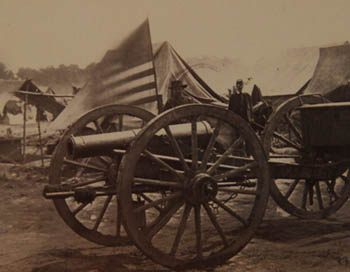 Union canon in a period photo
Union canon in a period photo
The Library of Congress
As slaves fled Southern controlled areas, they deprived the South of vital labor, and by joining the northern cause they provided the Union Army with a crucial labor force. As the war ground on, they became soldiers as well.
Research lays the foundation for any film about the Civil War and Reconstruction. Kent Moorhead always goes to the original sources.
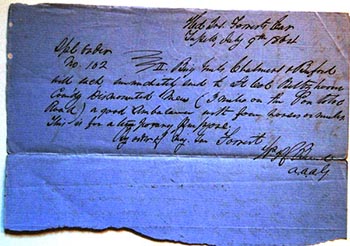
An order penned by N.B. Forrest staff at the battle of Tupelo
Document from National Archives. This image © 2019 by Passage Film, Inc.
Kent Moorhead is good at research. He knows his way around both the LIbrary of Congress and the National Archives in Washington, as well as regional libraries and archives. He also uses the Official Records of the Rebellion, as well as diaries, letters and other first-hand resources. Most importantly, he consults with prominent scholars and uses the established research and books about the battle or subjects for which he is making a film.
Scroll down to see clips about these subjects.
Creation of the USCT from Passage Film Inc. on Vimeo.
African-Americans had never seen the war as about Union. For them it was always a war of liberation. Now that they could fight, influential men in the North – both white and black – began to organize black regiments. Everyone had a different approach and the chaos was creating problems. So the army stepped in and created the Bureau of US Colored Troops to organize and train soldiers and develop a command structure for them. The men and NCOs would be black. Their officers were white.
Step by step, battle by battle, the black troops became accepted in all theaters of the war and became a crucial part of the Union army, fighting with Grant in Virginia, protecting the supply lines of Sherman, and manning forts and guarding railroads and rivers throughout the South. They also defended newly freed blacks and hunted rebel guerillas and partisans. Free black and former slaves fought equally well, but many northern officers noted that the ex-slaves were especially important in raids and counter-insurgency, since they knew the land and understood the people they fought, who in many cases were their former masters.
Because of the war, more slaves became free in the US, than in all of the new world combined. And it happened very quickly, within a few years. These people didn't just have to deal with their own life-decisions. They also had to learn politics and develop political organizations, develop new institutions including schools, churches, and burial societies among other social welfare programs. In short, African Americans built a fully functioning civil society within a decade. That is a remarkable process that has been looked at far too little. The soldiers and others who had served in the Union army, and especially those few that had an officer's rank, become new leaders in those communities. This is a story that contradicts the image of slaves passively waiting for changes to take place. It is also a story that links the past to the present since the communities of today are built upon those created then.
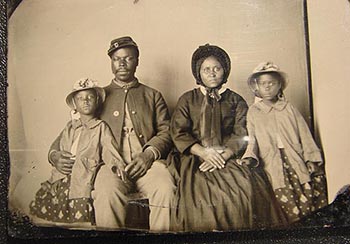
A soldier's pay could make the difference in the survival of his family. In Union slave states such as Kentucky, joining the Union Army also meant freedom for your family.
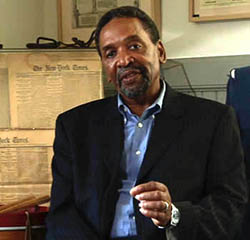 Frank Smith, pictured here, is the Director of the African American Civil War Memorial and Museum in Washington, D.C., and is featured in the film, Rather Die Free Than Live a Slave.
Frank Smith, pictured here, is the Director of the African American Civil War Memorial and Museum in Washington, D.C., and is featured in the film, Rather Die Free Than Live a Slave.
Kent Moorhead drew on his extensive footage shot at various Civil War battle re-enactments, as well as scenes crafted for the movie using re-enactors from the 12 United States Colored Heavy Artillery Reactivated, a group of Kentucky re-enactors.
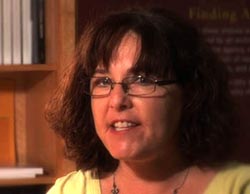 Kent Moorhead has done interviews on this history with, among others, Shelby Foote, Ed Bearrs, DeAnne Blanton and Frank Smith.
Kent Moorhead has done interviews on this history with, among others, Shelby Foote, Ed Bearrs, DeAnne Blanton and Frank Smith.
DeAnne Blanton of the National Archives has talked to Kent Moorhead about the role of women, including the hundreds of women who took on a male disguise and joined the army.
Shelby Foote talked about The Battle of Brice's Crossroads, including the role of the 55th and 59th USCT. Ed Bearrs addressed both that battle, as well as the Battle of Tupelo, where black soldiers played a key role in the decisive defeat of Nathan Bedford Forrest, which limited the effectiveness of his cavalary force for the remainder of the war.
Through these interviews and twenty-five years of reading the key scholarship on the war, Kent Moorhead knows the military campaigns of the various theaters of battle as well as the complicated politics that motivated the policies of both the Union and Confederate governments.
Promotional Video for Rather Die a Free Man - 720p version from Passage Film Inc. on Vimeo.
The following advisors have helped shape Kent Moorhead's understanding of the history of this subject. They have been working with Passage Film, Inc. in crafting a K-12 educational project to accompany Passage Film's Civil War film work.
Dr. Justin Behrend (Assistant Professor at the State University of New York-Geneseo)
Dr. William A. Dobak (Historian - U.S. Center of Military History, Ret.)
Dr. William Ferris (History, American Studies and Folklore, University of North Carolina.
Dr. Max Grivno (Associate Professor of History at the University of Southern Mississippi)
Mr. Bennie McRae (Private scholar with specialty in the USCT)
Dr. Leslie S. Rowland (Director, Freedmen and Southern Society Project, University of Maryland).
Dr. Donald R. Shaffer (History, University of Phoenix)
Dr. Alisea Williams McLeod (Chair of Humanities at Rust College, Mississippi)
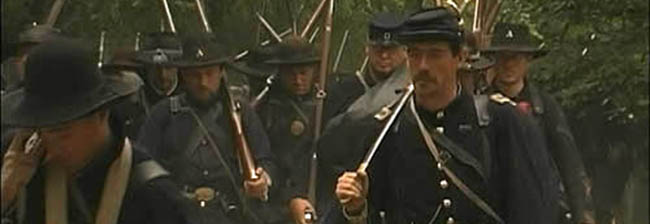
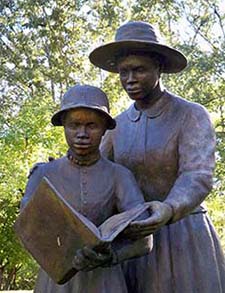 The Civil Rights movement didn't come from nowhere, it has deep roots stretching back into the past. It's hard to understand where we are now, if we don't also understand the history of the Civil War and Reconstruction, particularly the part African Americans played in that earlier struggle. The image here is a statue of a young black girl learning to read. It's part of the Corinth Contraband Camp Historical Site and it shows that the war wasn't just about fighting. It was also about black people reaching freedom inside Union lines where they learned to read & began building a new society. That was the freedom movement of the 1860s and without it we wouldn't have what came 100 years later.
The Civil Rights movement didn't come from nowhere, it has deep roots stretching back into the past. It's hard to understand where we are now, if we don't also understand the history of the Civil War and Reconstruction, particularly the part African Americans played in that earlier struggle. The image here is a statue of a young black girl learning to read. It's part of the Corinth Contraband Camp Historical Site and it shows that the war wasn't just about fighting. It was also about black people reaching freedom inside Union lines where they learned to read & began building a new society. That was the freedom movement of the 1860s and without it we wouldn't have what came 100 years later.
When I interviewed Movement leader Annie Devine, I asked her to tell me when she thought the movement had started. She answered that it had always been there, that enslaved Africans had longed for freedom and fought for it from the first. And that it was still going on, the Movement never stopped. She then gave a long, beautiful history of the struggle. Her eloquent answer changed the way I looked at things. Since then I've studied the Civil War alongside Civil Rights. I used to view these as separate things – not anymore. Check out The Mississippi Project and Filming Civil Rights to read about Passage Film's work with Civil Rights history.
"The Past is Painful," says Alisea Williams McLeod. "It takes some time to bridge reality as you've known it, with all of what becomes possible once you have information that you haven't had your whole life. It changes everything."
Alisea McLeod Interview Selects_sept 2014 from Passage Film Inc. on Vimeo.
Alisea Williams McLeod is a scholar who has extensively studied Reconstruction in the Mid-South region, looking into the fate of those who escaped slavery and began building new lives in Memphis and its surrounding Contraband Camps, such as Corinth. She found her own ancester in the "Register of Freedmen", a registry of freed men and women created by the Union Army. She has worked with Kent Moorhead, assisting his Civil War and Reconstruction research. This is a compilation of selected clips from an interview with Ms. McLeod made by Kent Moorhead and Passage Film, Inc. in 2014.